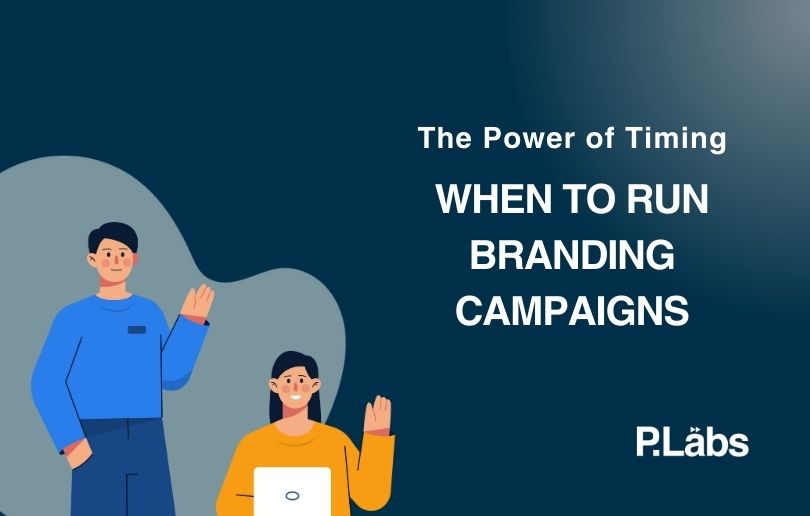In the highly competitive business landscape today, it is crucial for brands to stand out and differentiate themselves from their competitors. One of the most effective ways to achieve this is through branding campaigns. A branding campaign is a marketing tool that presents a brand's story and message to its target audience, with the goal of increasing brand awareness and improving brand equity.
Launching a New Product or Service
When a brand is launching a new product or service, it needs to inform its customers to generate excitement and interest in the new offering. This is where a branding campaign comes in handy. By using various marketing tools such as social media marketing, advertising, and public relations, a brand can promote the launch and create buzz around the new product or service. The goal is to establish the brand as a leader in the industry and differentiate it from its competitors. An example of a successful branding campaign is the launch of the iPhone by Apple. The company used a comprehensive marketing campaign that included TV commercials, print ads, billboards, and public relations to generate buzz and excitement around the iPhone's launch. The campaign helped establish the iPhone as a revolutionary product that changed the smartphone industry forever.
Slow Sales Periods
Branding campaigns have the power to help brands during slow sales periods. When a company is facing low sales, it can use a branding campaign to renew interest and improve its sales numbers. A common thought process is to conserve spending by not spending; however a well-thought out marketing campaign works to boost sales. By communicating the brand's unique value proposition or USP, and differentiating it from its competitors, perhaps in a new territory or market, a branding campaign can provide a much-needed boost during slow sales periods. Another good example of a branding campaign that helped a brand during a slow sales period is the "Get a Mac" campaign by Apple. The company launched the campaign during a period when its sales were declining. The campaign featured a series of TV commercials that showcased the benefits of using a Mac computer over a PC. The campaign helped increase Mac sales and re-establish Apple as a leading brand in the computer industry. It must be noted though that the campaigns need to be built on strong insights, analytics or a communication idea that is unique. In today’s age with the amount of exposure and ads, it’s increasingly hard to find the same scale and success while launching ads.
Managing negative perception
Sometimes, brands have to contend with negative perceptions or rumours that can cause reputational damage and as result trust, which ultimately impacts sales. In such cases, a branding campaign can help address the issue and restore consumer confidence. By using transparent and honest messaging, a brand can deal with negative rumours and reinforce its commitment to quality and customer satisfaction. An example of a brand using negative customer behaviour in its campaign was the Dove "Real Beauty" campaign. The campaign featured a series of ads that celebrated the natural beauty of women of all ages, shapes, and sizes. The campaign helped to address negative perceptions around the beauty industry, and took the moment to anchor itself as a brand rooted in natural beauty, with a focus on self-love. Often responses to rumours tend to be a part of a well-thought-through crisis communications campaign which not only uses advertising directly, but also influencers to tell the brand’s side of the story. When the famous cricketer Sourav Ganguly – a brand ambassador for Fortune Cooking Oil –was taken ill due to a heart-attack, the brand unwittingly came under fire for not being true to its name, and claim –of being heart healthy. The company had to stop running ads as a first measure, and then did several interviews to manage customer perception around the product itself.
Building Awareness
If a brand is facing competition and trying to reach new customers, a branding campaign can help increase brand awareness. By using a variety of marketing channels such as social media, advertising, and content marketing, a brand can reach a larger audience and establish itself as a top player in the industry. However, it’s crucial to note that no branding campaign can be successful as a once-in-a-blue-moon idea. For each brand, and industry, there are specific seasons or times when it’s advisable to advertise. And in today’s hyper competitive spaces, brands choose moments throughout the year to attach themselves to specific moments in the calendar year. For example, doing an annual Mother’s Day campaign is something of a tentpole idea for Vicks, whereas all air-conditioning brands are likely to commence advertising during the start of summer. As a practice brand marketing has to be consistent to develop recall in the consumer’s mind. The scale today can vary, thanks to the presence of social media ads but regularity is what’s important over scale for brands looking to build awareness for themselves. As one of the largest advertisers globally, Coca Cola is known for its successful branding campaigns. The "Share a Coke" campaign by Coca-Cola is possibly one of the most memorable ones, due to its ability to cut across geographies and ages. It featured bottles and cans with popular names and encouraged customers to share a coke with their friends and family.
Branding campaigns are essential for any brand that wants to stand out today. But the key to doing so is finding the right combination of messaging, channels and timing which ensure that customers remember your brand. Often a telltale sign of a brand having positioned itself well in the consumer’s mind is if a person can recognise any piece of communication even without the logo –that is the most successful benchmark of branding campaigns a company can work towards achieving.

